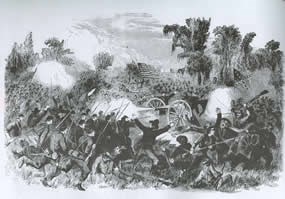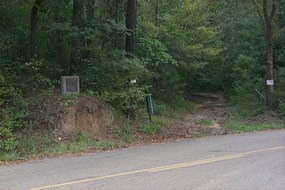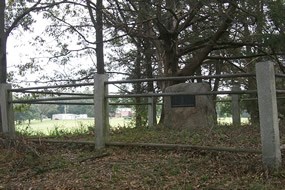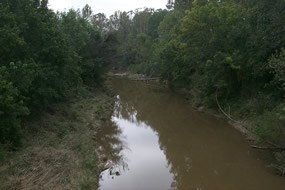
Harper's Weekly
Once contact had been made, Confederate commander, Lieutenant General John C. Pemberton, quickly deployed his three divisions. The Confederate battle line, three miles in length, ran from southwest to northeast along the military crest of a ridge overlooking Jackson Creek. The crest of Champion Hill, on the left of the line, was picketed as a security measure. Pemberton's position was suited for defense and was especially formidable against attacks via the Middle and Raymond roads. He was unaware, however, that a strong Union force was pushing down the Jackson Road toward his unprotected left flank. If unchecked, these Federals would capture Edwards and cut the Confederates off from their base of operations — Vicksburg. Shortly after 9 a.m., a courier brought warning of the Federal advance along the Jackson Road. Confederate troops were shifted to the left to cover Champion Hill and protect the vital Crossroads. As the Southern troops hastened into position on the crest of Champion Hill, Union soldiers near the Champion House swung from a column into a double line of battle. Artillery was wheeled into position and unlimbered. The bloodshed began in earnest when the guns roared into action. 
Harper's Weekly 
NPS Photo By 11:30 a.m., the Northerners closed in on the Confederate main line of resistance. Cheering loudly, they stormed the position. Fighting was intense as the battle raged on Champion Hill, with the lines swaying back and forth as charge and countercharge were made. But the strength of numbers prevailed, and the blue tide swept over the crest of Champion Hill shortly after 1 p.m.
The Confederates to the Jackson Road in disarray, followed closely by the hard-charging Federals. The powerful Union drive captured the Crossroads, thereby severing the Jackson Road escape route on the right. Confronted by disaster, Pemberton ordered his two remaining divisions to counterattack. Leaving one brigade to guard the Raymond Road, the Southerners marched from their right along the Ratliff Road toward the Crossroads. With characteristic abandon the 4,500 soldiers of Brigadier General John S. Bowen's division attacked, hitting the Federals with fury and determination near the Crossroads. At the point of bayonet, they drove the blue-clad troops back three-quarters of a mile, regaining control of Champion Hill. Insufficient numbers, however, caused the attack to falter just short of the Champion House. To prevent a breakthrough of his lines, Grant ordered up fresh troops to drive back the Confederates. Additionally, Federals along the Middle and Raymond roads intensified their drive. All morning they had operated under instructions to "move cautiously," but now threw themselves forward into battle. In a matter of moments, Confederate resistance was shattered, and Pemberton ordered his army from the field. 
NPS Photo 
NPS Photo May 16, 1863, was a disastrous day for Pemberton. His army lost 381 killed, 1,018 wounded, and 2,441 missing out of the 23,000 men he led into battle, coupled with the loss of 27 vital artillery pieces. For more information on the Battle of Champion Hill:Bakers CreekChampion House Coker House Crossroads Davis Plantation / Ellison House Tilghman Monument Yeiser House |
Last updated: April 7, 2017
